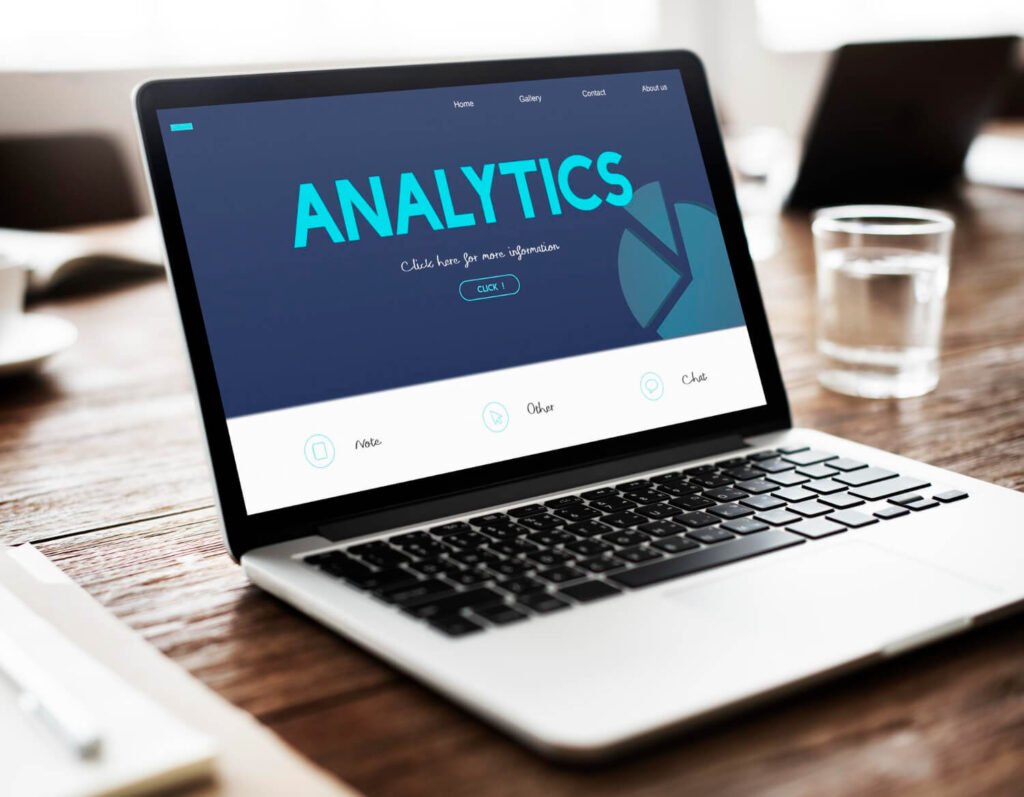In the past, website design was often driven primarily by aesthetics or what “looked good” to the brand team. However, for the smartest brands today, a truly successful website needs to appeal to both human visitors and the algorithms that drive search results. That’s where the power of web analytics comes in.
Web analytics go far beyond telling you how many people visited your site. When analysed strategically, they reveal crucial insights into user behaviour that can guide design choices and directly impact your search engine optimization (SEO) efforts.
Key Web Analytics Metrics for SEO-Informed Design
Think of your analytics dashboard as a roadmap to designing a website that performs. Here are a few metrics to pay attention to.
- Traffic Sources: Understanding where your website traffic originates is essential. Analyse:
- Organic search: This reveals how much traffic arrives from search engines and which specific keywords bring people to your site.
- Direct traffic: These are people typing your URL directly or accessing it via a bookmark. High direct traffic indicates strong brand awareness.
- Referral traffic: Identifying websites that link to yours reveals backlink sources and highlights potential new partnership opportunities to expand your reach.
- Bounce Rate: This metric shows the percentage of visitors who leave your site after viewing only one page. Several factors influence bounce rate:
- Overall bounce rate: Gives you a baseline.
- Page-specific bounce rate: High rates on certain pages signal a disconnect between user expectations and the content or design of that page.
- Pages per Session & Average Session Duration: These engagement metrics reveal how deeply users explore your website beyond the initial landing page. Can design tweaks (like better internal linking or prominent calls-to-action) encourage them to consume more of your content?
- Device Breakdown: Mobile-first design isn’t just a buzzword, it’s an SEO necessity. Analyse what percentage of your visitors are on desktop vs. mobile devices. If your mobile experience is subpar, it will likely be reflected in poor SEO performance.
- Search Console Integration (If Available): Connecting your Google Search Console data to your analytics gives you even more power. You’ll see the exact search terms that drive traffic to your site, your click-through rate from search results, and more.
Using Web Analytics to Improve SEO-Friendly Website Design

- Navigation & Information Architecture: Are your menus clear and intuitive? Use analytics to pinpoint if people are struggling to find what they need. Pages with high bounce rates or short visit durations might signal a navigation problem that needs fixing. Refer back to our post on information architecture for more on this.
- Internal Linking: Your analytics will show which pages naturally draw the most traffic. Use those high-traffic pages strategically, incorporating internal links that seamlessly guide visitors to other relevant content. This strengthens your topical authority on subjects important to your business.
- Content Effectiveness:
- Popular pages: What are your top-performing pages based on traffic and low bounce rates? Expand on those themes to create similar content or build topic clusters around them.
- Low engagement pages: Is certain content falling flat? It might be time to revamp, update with better visuals, or remove it from your site architecture if it’s negatively impacting your SEO.
- Site Speed: Page load speed is a crucial ranking factor. If your web analytics reveal pages with long load times alongside high bounce rates, technical SEO improvements are urgent! A user-friendly experience is also a search engine-friendly experience.
- Heatmaps & Scroll Tracking: Heatmap and scroll tracking tools visually show where users click, how far they scroll, and what elements capture their attention. This can reveal opportunities for design tweaks that boost engagement and keep visitors on your site longer.
- Tracking Conversions: Web analytics should track key conversion goals – whether that’s form submissions, newsletter signups, or sales. Can you replicate design elements from pages with high conversion rates across your site to encourage more actions?
Optimise for Visibility with the Right Analytics
Embracing an analytics-driven approach to website design might feel technical at first, but the rewards are well worth it. By shifting your mindset to see web analytics as a powerful tool for understanding your audience, you can create a visually appealing and strategically optimised website. The result? Increased visibility, a better user experience, and the data to back up your design choices for years.
Ready to maximise the power of web analytics for SEO-informed design? Edens Digital can help! From in-depth analytics audits to design recommendations and implementation, we’ll turn your website data into actionable results. Contact us today for a consultation.





